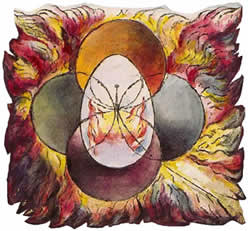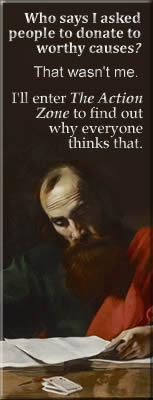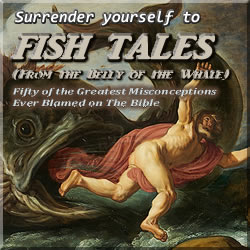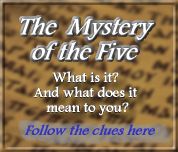Arguments for Authenticity (Cont’d)
The Seeds of Truth
The central issue encountered by anyone who reads a book like The Book of Tales, is that it is a book that incorporates, at its core, stories that have all been stitched together from the so-called “apocryphal” record—in particular, The First Book of Adam and Eve, The Secrets of Enoch, The Book of Jasher, The Letters of Herod and Pilate, and The Gospel of Nicodemus. Naturally, in my own defense, only those stories that could be corroborated by the canonical record were drawn from, while any that contradicted it were summarily rejected. But far from expecting anyone to accept it all at face value, I am attempting, by way of these opening remarks, to provide a framework to make one’s own judgment as to whether the apocryphal record can be trusted as a valid source of truth. Notwithstanding the centuries-old debate surrounding this literature, there are ways that one can approach the issue, and, as previously stated, the process I am offering will assuredly originate from the teachings and principles that are firmly grounded in the Biblical Canon.
What is truth, then? If one is a staunch believer in the traditional view of only the so-called “received texts,” then I would quickly remind them that even Jesus taught that truth was not the same thing to each and every person. According to Him, the whole world can be divided into four distinct groups. Each group, when confronted by “truth,” will interpret this information based on their own personal frame of reference, and by virtue of these four different perspectives, what constitutes truth will inevitably end up producing four different results. Truth, then, no matter how obvious it seems can never be received in the same way by all people. Consequently, when Jesus spoke of the dispensing and receiving of truth, He compared it to a farmer who went about scattering seeds in a field, and as can be expected, He predicted four very different outcomes. Some seeds were gobbled up by the birds before they even got planted into the ground. Some seeds fell on rocky ground and sprouted, but, because they lacked depth of soil, withered in the heat of the Sun. Some seeds fell among thorns so that when the plants grew up they choked and died before too long. And finally, there were some seeds that fell among good soil; these proved to be the only ones that were able to produce a healthy crop.1
Story Continues Below
Says Richard Price—the founder and CEO of Academia.edu—on his podcast In Depth With Academia:
The Book of Tales: Stories That Confirm the 5,500-year Prophecy Given to Adam About the Coming of Christ is:
To hear Price’s book review of The Book of Tales, CLICK HERE.
To hear Kent, Zen Garcia and S. Douglas Woodward, as they discuss the 5,500-year chronology from Adam to Christ, from the perspective of The Septuagint Bible, to confirm the contents of Tales of Forever, CLICK BELOW.
Story Continues From Above
By the Middles Ages, this idea of the four-fold nature of assimilating truth became the impetus of a tradition of biblical interpretation that had its origins in the commentaries of the early Christian Era. Said Stephen A. Barney, professor emeritus of English at the University of California, Irvine, the four levels of interpretation involved: One, a “literal” interpretation of the events of the biblical story for historical purposes, with no underlying meaning. Two, a “typological” interpretation that connected the events of The Old Testament with The New Testament, particularly in the way that events of Christ’s life related to the lives of earlier messianic figures who preceded Him. Three, a “moral” interpretation, which involved how one should act in the present, that is to say, a meaning derived from the “moral of the story.” And four, an “analogical” interpretation, which had to do with an understanding of prophetic, or future, events of Christian history, that is to say, Heaven, Hell, and Judgment Day. In this way, the four types of interpretation correspond to all three modes of existence—past, present, and future: literal, with our past; typological, connecting the past with our present; moral, with our present; and analogical, with our future.2
To illustrate how this four-fold approach applies to Scripture, Dante, called “one of the greatest literary icons of the Western world,”3 offered this example:
To clarify this method of treatment, consider this verse: “When Israel went out of Egypt, the House of Jacob from a barbarous people, Judah was made His sanctuary, and Israel His dominion.” (Psalm 113:1-2) Now, if we examine the letters alone (literally), the Exodus of the Children of Israel in the time of Moses is signified; in the allegory (typologically), our redemption accomplished through Christ; in the moral sense, the conversion of the soul from the struggle and misery of sin to the status of grace; in the analogical sense, the exodus of the human soul from the slavery of this corruption to the freedom of eternal glory.4
Furthermore, this same idea of the four-fold nature of truth was no stranger to either Jewish or Islamic theology. In Judaism it is known as Pardes, which refers to four different approaches to interpreting the biblical text. Peshat pertains to the “surface,” or literal, meaning; remez, the “deep,” or symbolic, meaning; derash, the “comparative,” or similar, meaning; and sod, the “secret,” or mystical, meaning.5 And in Islam this idea was expressed by Jafar al-Sadiq, the Muslim scholar and Imam, who stated that The Koran has four similar levels of interpretation: “The Book of God has four things—literal expression (ibara), allusion (ishara), subtleties (lataif), and the deepest realities (haqaiq). The literal expression is for the common folk, the allusion is for the elite, the subtleties are for the friends of God, and the deepest realities are for the prophets.”6
No wonder that when Jesus spoke about understanding the things of God, He referred to this four-fold principle of awareness. Therefore, it is with this four-fold aspect of knowledge in mind that I would now like to address why I have become convinced of the authenticity of the books that all but the ancient world—while in the case of The Gospel of Nicodemus, the pre-Reformation world—have deemed apocryphal. The reasons for this conviction stem from the following: First, in an etymological meaning revealed in the very word apocryphal; second, in the prophetic nature of the biblical record itself; third, in the internal logic of the books which comprise the apocryphal record; and fourth, in the striking relation with which those books correspond with the Canon of Scripture. For some, only one aspect of this explanation will prove sufficient in lending credence to this work, while others will require more convincing, more evidence, more time. Yet, alas, some will never open their minds to the truth as it is presented here, no matter how hard one tries, and for that, the Lord of the Harvest reminds the best intentioned among us, they have no one to blame but themselves.







